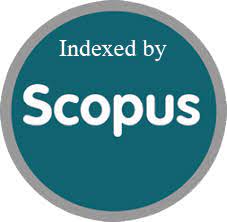A Study of Talar Neck in Detail by Comparing the X-Ray Foot Oblique View with Canale and Kelly View
DOI:
https://doi.org/10.52783/jns.v14.3328Keywords:
Canale and Kelly view, osteoporosis, superimposition, talar neck, tarsal bonesAbstract
Background: Medical imaging plays a vital role in providing images of the soft tissue and internal structures of the body. It uses different modalities for diagnosis and treatment in healthcare for all age groups. For initial diagnostic accuracy, x-rays are instrumental in identifying and assessing fractures, helping clinicians determine the type and severity of the injury. Imaging of the talar neck was quite difficult to interpret in routine foot projections.
Method: It is a cross-sectional study with a sample of 50 patients was included. The inclusion criteria were patients with long-term foot pain, walking difficulty, ATFL, osteoarthritis, road traffic accidents, ortho implants and exclusion criteria were patients with no complaints of foot injury, pregnant women.
Result: In this study we evaluated 50 patients, the addition of Canale and Kelly’s view radiographs can improve the efficacy of talar neck identification as well as alter clinical treatment plans. Our data demonstrates a trend toward increased accuracy of talar neck identification with the addition of Canale and Kelly’s view radiographs.
Conclusion: It is evident that the Canale and Kelly’s view is necessary to obtain a correct view of the talar neck and to correctly identify fractures. It provides a clear visualization of the talar neck and will reveal any neck displacement or malreduction..
Downloads
Metrics
References
Thayalan K. The physics of radiology and imaging. New Delhi, India: Jaypee Brothers Medical; 2014.
MacGregor R, Byerly DW. Anatomy, bony pelvis and lower limb: Foot bones. StatPearls Publishing; 2023.
Madhyastha. Manipal manual of anatomy: For allied health sciences courses. New Delhi, India: CBS Publishers & Distributors; 2007.
Singh A, Singh A. A morphological and morphometric study of talus in relation to ankle implant. Natl J Clin Anat [Internet]. 2022;11(4):211. doi.org/10.4103/njca.njca_138_22
Stewart Whitley A, Jefferson G, Holmes K, Sloane C, Anderson C, Hoadley G, et al. Clark’s positioning in radiography 13E [Internet]. 13th ed. London, England: Hodder Arnold; 2015.
Hegazy AAM, Hegazy MA. Talus Bone: Unique Anatomy. Int J Cadaver Stud Ant Var [Internet]. 2022 [cited 2024 Jul 25];3(2):52 Availabe from: www.researchlakejournals.com/index.php/IJCSAV/article/view/191
Rush SM, Jennings M, Hamilton GA. Talus fractures: Surgical principles. Clin Podiatr Med Surg [Internet]. 2009;26(1):91–103. doi.org/10.1016/j.cpm.2008.09.007
Haft GF. Talus open reduction and internal fixation. In: Operative Dictations in Orthopedic Surgery. New York, NY: Springer New York; 2013. p. 237–9.
Ibrahim M. Talar Neck Fractures: An Overview. J Nov Physiother Rehabil 2014;013–8. doi: 10.17352/2455-5487.000003
Arbabi S, Seevinck P, Weinans H, de Jong PA, Sturkenboom J, van Hamersvelt RW, et al. Statistical shape model of the talus bone morphology: A comparison between impinged and nonimpinged ankles. J Orthop Res [Internet]. 2023;41(1):183–95. doi.org/10.1002/jor.25328
Murphy A. Talus (Canale view). In: Radiopaedia.org. Radiopaedia.org; 2022. radiopaedia.org/articles/foot-dp-talus-view
Whitaker C, Turvey B, Illical EM. Current concepts in Talar neck fracture management. Curr Rev Musculoskelet Med [Internet]. 2018;11(3):456–74. doi.org/10.1007/s12178-018-9509-9
Alton T, Patton DJ, Gee AO. Classifications in brief: The Hawkins classification for talus fractures. Clin Orthop Relat Res [Internet]. 2015;473(9):3046–9. doi.org/10.1007/s11999-015-4136-x
Melenevsky Y, Mackey RA, Abrahams RB, Thomson NB III. Talar fractures and dislocations: A radiologist’s guide to timely diagnosis and classification. Radiographics [Internet]. 2015;35(3):765–79. doi.org/10.1148/rg.2015140156
Adyaab AAA, Gaith MAM. Clinical and radiological diagnosis of Talar fractures: Review article. Egypt J Hosp Med [Internet]. 2022;88(1):2388–93. doi.org/10.21608/ejhm.2022.236115
Downloads
Published
How to Cite
Issue
Section
License

This work is licensed under a Creative Commons Attribution 4.0 International License.
You are free to:
- Share — copy and redistribute the material in any medium or format
- Adapt — remix, transform, and build upon the material for any purpose, even commercially.
Terms:
- Attribution — You must give appropriate credit, provide a link to the license, and indicate if changes were made. You may do so in any reasonable manner, but not in any way that suggests the licensor endorses you or your use.
- No additional restrictions — You may not apply legal terms or technological measures that legally restrict others from doing anything the license permits.










